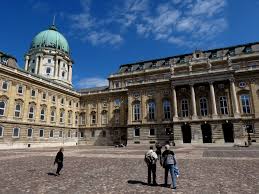Exploring Budapest: A Jewel of Central Europe

Introduction
Budapest, the capital city of Hungary, stands as a captivating confluence of history, culture, and natural beauty. It is a UNESCO World Heritage site, often referred to as the “Paris of the East” due to its stunning architecture and vibrant atmosphere. With a population of approximately 1.75 million, Budapest plays a crucial role in Central Europe, both as a political hub and a cultural hotspot. Its strategic position along the Danube River has made it a focal point for trade and tourism over the centuries, attracting visitors from around the globe.
Historical Significance
The history of Budapest dates back to Roman times, with the settlement of Aquincum around 89 AD. The city has witnessed myriad transformations, from the Ottoman occupation to being part of the Austro-Hungarian Empire. Notably, the unification of Buda, Pest, and Óbuda in 1872 marked the beginning of modern Budapest, which saw rapid development and expansion. Today, historical sites like Buda Castle, Fisherman’s Bastion, and the iconic Chain Bridge reflect the city’s rich past and architectural grandeur.
Cultural Highlights
Budapest is renowned for its cultural offerings, hosting a variety of festivals, museums, and theatres throughout the year. The Hungarian State Opera House, a neoclassical masterpiece, is a must-visit for art enthusiasts. Additionally, the city’s vibrant ruin bars, often located in abandoned buildings, provide a unique nightlife experience combining art, music, and local cuisine. As the birthplace of renowned composers like Franz Liszt and Béla Bartók, Budapest also celebrates its musical heritage through various concerts and events.
Natural Wonders and Attractions
One of Budapest’s most remarkable features is its thermal baths, a legacy from Ottoman rule. The Széchenyi Thermal Bath, one of the largest in Europe, attracts tourists seeking relaxation and rejuvenation. The picturesque Danube River, which splits Buda and Pest, offers stunning views, especially at sunset, making river cruises a popular activity. Other attractions include the majestic Parliament Building and the scenic Margit Island, providing leisure and recreational opportunities within the city.
Conclusion
Budapest is a city that weaves together the threads of its historical heritage with its modern vibrancy. As it continues to grow as a significant European travel destination, the city’s blend of culture, history, and natural beauty ensures it remains relevant for future generations. With ongoing investments in tourism and infrastructure, Budapest is expected to further enhance its appeal, making it a must-visit location for anyone seeking to experience the heart of Hungary.









